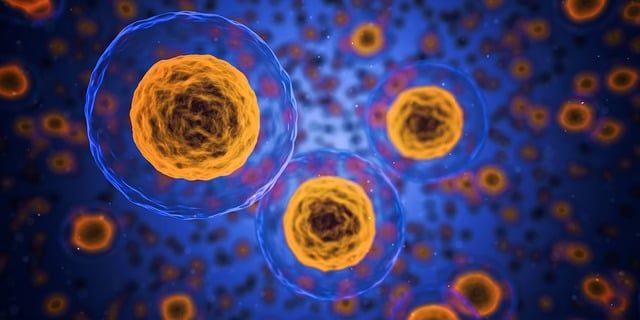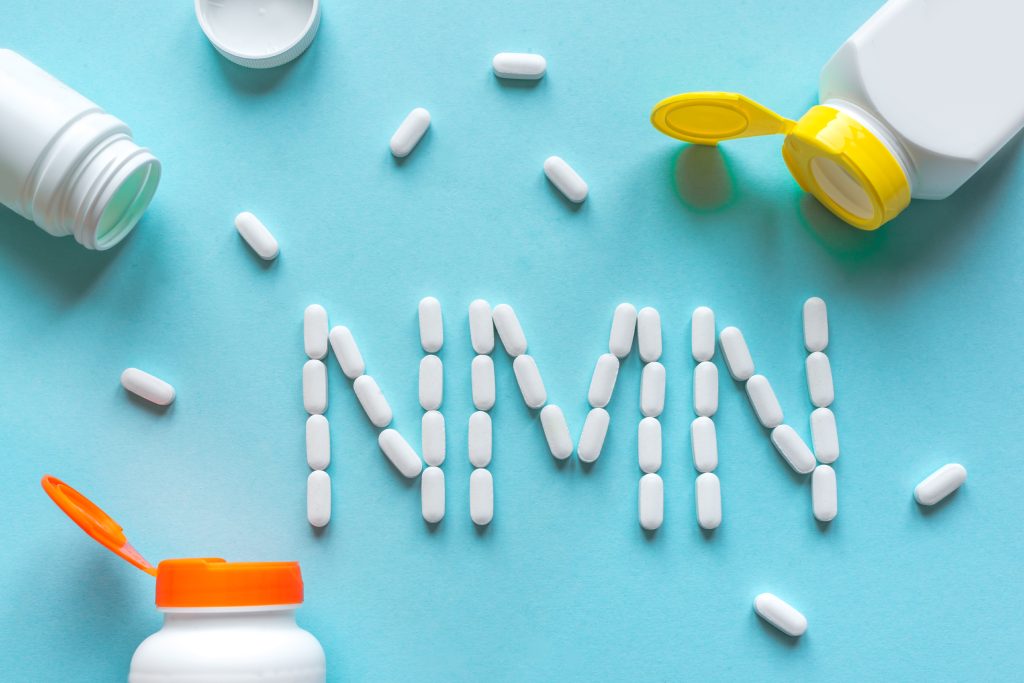Understanding the Role and Importance of Senescence Markers in Aging Biology
Senescence markers play a crucial role in understanding the aging process and its impact on various biological aspects. By defining and identifying these markers, scientists have gained valuable insights into the complex mechanisms underlying aging and age-related diseases. This article aims to provide a comprehensive overview of senescence markers, their role in aging biology, and why studying them is important.

Multiple bodily systems contribute to fighting aging
Defining Senescence Markers
To begin exploring, it is necessary to understand what senescence markers are. Senescence refers to the irreversible arrest of cell division and the cellular state associated with aging. Senescence markers are specific cellular and molecular characteristics that indicate the presence of senescent cells. Senescent cells exhibit distinct changes in their morphology, gene expression profiles, and secretion patterns. These changes allow scientists to identify and classify cells as senescent, providing a valuable tool for studying the aging process.
One of the most prominent senescence markers is the senescence-associated beta-galactosidase (SA-β-gal). This enzyme is commonly used as a marker to detect senescent cells. SA-β-gal exhibits increased activity in aging and senescent cells, making it a reliable indicator of cellular senescence.
Another important senescence marker is the senescence-associated secretory phenotype (SASP). SASP refers to the secretion of various factors, such as cytokines, chemokines, and growth factors, by senescent cells. It is a characteristic feature of the senescent phenotype and plays a significant role in the aging process.
The Biological Process of Senescence
Read this article to learn more about Dr. Hayflick and the different types of senescence and how they relate to aging.
Sixty years ago, Dr. Leonard Hayflick made a groundbreaking discovery that revolutionized the understanding of cellular aging. He found that human cells have a limited capacity for division, known as the Hayflick limit. This phenomenon suggests that senescence is a natural biological process that occurs as cells undergo successive rounds of division.
As cells reach the end of their replicative lifespan, they enter a state of permanent growth arrest. This growth arrest is accompanied by various cellular and molecular alterations collectively referred to as senescence. These alterations include changes in chromatin structure, DNA damage, and the activation of specific signaling pathways.
Several intrinsic and extrinsic factors can trigger senescence. One of the most well-known triggers is telomere shortening. Telomeres are protective caps at the ends of chromosomes that shorten with each cell division. When telomeres become critically short, they signal the cell to enter a state of senescence.
In addition to telomere shortening, DNA damage, oxidative stress, and inflammation can also induce senescence. DNA damage, caused by various factors such as radiation or chemical exposure, activates the DNA damage response pathway, leading to cell cycle arrest and senescence. Oxidative stress, resulting from an imbalance between reactive oxygen species and antioxidant defenses, can also trigger senescence by causing cellular damage. Furthermore, chronic inflammation can promote cellular senescence through the release of pro-inflammatory cytokines.
Key Senescence Markers in Aging Biology
Senescence markers serve as identifying features of senescent cells and help researchers distinguish them from their non-senescent counterparts. In addition to SA-β-gal and SASP, several other key senescence markers play crucial roles in aging biology.
- p16INK4a: This protein plays a central role in regulating cell cycle progression and is highly expressed in senescent cells. It acts as a tumor suppressor by inhibiting the activity of cyclin-dependent kinases, which are essential for cell division.
- p21Cip1/Waf1: Another cell cycle regulator, p21, is upregulated in senescent cells and contributes to their growth arrest. It functions by inhibiting cyclin-dependent kinases and preventing the progression of the cell cycle.
- p53: Known as the “guardian of the genome,” p53 is a tumor suppressor protein that plays a critical role in senescence. It is activated in response to DNA damage and induces cell cycle arrest, DNA repair, or apoptosis, depending on the severity of the damage.
- Senescence-associated heterochromatin foci (SAHF): SAHF are specialized structures formed in the nucleus of senescent cells. They consist of condensed and silenced chromatin regions, contributing to the stable growth arrest observed in senescence.
- Senescence-associated DNA methylation changes: DNA methylation is an epigenetic modification that regulates gene expression. Senescent cells undergo specific DNA methylation changes, leading to alterations in gene expression patterns that are characteristic of the senescent phenotype.
These markers, along with others, serve as key indicators of cellular senescence and aid in the identification and study of senescent cells in various tissues and organisms. By understanding the biological processes and markers associated with senescence, scientists can gain valuable insights into the aging process and potentially develop interventions to promote healthy aging.

Red blood cells
The Role of Senescence Markers in Aging
Senescence markers not only enable the identification of senescent cells but also provide valuable insights into how these cells influence the aging process.
How Senescence Markers Influence Aging
Senescent cells have been found to contribute to tissue dysfunction and age-related pathologies. By studying senescence markers, researchers have uncovered the impact of senescent cells on aging.
One key aspect of senescent cells is their altered secretion profile, known as the senescence-associated secretory phenotype (SASP). The SASP includes the secretion of various pro-inflammatory molecules, growth factors, and matrix remodeling enzymes. These SASP components can have either beneficial or detrimental effects on neighboring cells and tissues.
For example, some SASP factors may promote tissue repair and regeneration during wound healing. However, chronic exposure to pro-inflammatory SASP factors can lead to a state of chronic inflammation, which contributes to tissue degeneration and age-related diseases such as arthritis, cardiovascular disease, and neurodegeneration.
Furthermore, senescent cells can also induce senescence in nearby cells through the secretion of factors like SASP components. This phenomenon, referred to as the “senescence-associated bystander effect,” can propagate senescence throughout tissues, accelerating the aging process.
The Interplay between Senescence Markers and Aging Cells
Senescence markers provide crucial insights into the molecular mechanisms underlying cellular senescence and aging. By studying these markers, scientists have discovered intricate signaling networks that regulate senescence and the interactions between senescent cells and their microenvironment.
For example, the upregulation of the p16INK4a and p21Cip1/Waf1 genes in senescent cells illustrates their role in promoting growth arrest and senescence. Understanding these signaling pathways and their crosstalk with other cellular processes can help researchers develop strategies to modulate senescence and potentially slow down the aging process.
Furthermore, senescence markers also shed light on the heterogeneity of senescent cells within tissues. Not all senescent cells express the same markers or exhibit identical functional characteristics. This heterogeneity has important implications for aging and age-related diseases, as different subsets of senescent cells may have unique roles in tissue homeostasis and repair.
The Importance of Studying Senescence Markers
Studying senescence markers is of utmost importance for several reasons, with implications for health, longevity, and disease prevention.
Potential Implications for Health and Longevity
Understanding the role of senescence markers can provide valuable insights into the underlying mechanisms of aging and help identify potential interventions to promote healthy aging. By targeting specific senescence markers or modulating the cellular processes associated with senescence, it may be possible to delay or mitigate age-related diseases and promote longevity.
Investigating senescence markers also offers the opportunity to discover novel biomarkers for early diagnosis and intervention in age-related diseases. Early detection of senescent cells or alterations in senescence markers could aid in diagnosing and monitoring age-related conditions, allowing for more timely and targeted therapeutic interventions.
Senescence Markers and Age-Related Diseases
Senescence markers have been implicated in a wide range of age-related diseases, including cancer, cardiovascular disease, neurodegenerative disorders, and chronic kidney disease. By studying these markers, researchers hope to unravel the underlying mechanisms linking cellular senescence and disease development.
For instance, increased expression of p16INK4a has been observed in various age-related pathologies, making it a promising target for therapeutics. Inhibiting or clearing senescent cells that exhibit high levels of p16INK4a could be a potential strategy to prevent or treat these diseases.
Current Research on Senescence Markers
Research on senescence markers is evolving rapidly, driven by the increasing recognition of their role in aging biology and age-related diseases.
Advances in Senescence Marker Detection
Technological advancements have revolutionized the detection and characterization of senescence markers, allowing for more precise and detailed analysis of senescent cells.
For instance, single-cell sequencing and imaging techniques enable the identification and classification of individual senescent cells based on their specific gene expression profiles and morphological characteristics.
These advancements not only enhance our understanding of cellular senescence but also provide opportunities for developing targeted interventions to modulate senescence and potentially slow down the aging process.
Future Directions in Senescence Marker Research
The study of senescence markers is still a relatively young field, and there is much more to be discovered. Future research directions include:
- Unraveling the mechanisms that regulate the expression and activity of senescence markers
- Investigating the heterogeneity of senescent cells and their functional roles
- Identifying novel senescence markers or refining existing markers for improved detection and characterization of senescent cells
- Developing targeted interventions that modulate senescence and promote healthy aging
By addressing these research gaps, scientists hope to uncover new insights into aging biology and develop innovative strategies to counteract the detrimental effects of aging and age-related diseases.
The Impact of Senescence Markers on Aging Interventions
The knowledge gained from studying senescence markers holds great promise for the development of interventions that could slow down the aging process and improve healthspan.
Senescence Markers and Anti-Aging Strategies
Senescence markers can guide the development of anti-aging strategies aimed at modulating the underlying cellular processes associated with senescence. One approach involves targeting specific senescence markers or senescence-associated signaling pathways to eliminate or minimize the detrimental effects of senescent cells. This approach, known as senolytic therapy, has shown promise in preclinical studies and is currently being investigated in clinical trials as a potential treatment for age-related diseases.
Another strategy involves interventions that promote the clearance of senescent cells by enhancing their recognition and elimination by the immune system. This approach, known as senescent cell clearance or senomorphic therapy, aims to improve tissue homeostasis and delay age-related functional decline.
The Role of Senescence Markers in Therapeutic Approaches
Senescence markers can also guide the development of therapeutic approaches that target specific senescent cells or modulate the senescence-associated secretory phenotype (SASP).
For instance, researchers are exploring strategies to selectively target senescent cells using antibody-based therapies or small molecule inhibitors. These approaches aim to eliminate or reduce the burden of senescent cells in tissues, thereby alleviating age-related pathologies.
Therapeutic interventions may also focus on modulating the SASP to counteract its detrimental effects. By targeting specific SASP components or altering their secretion patterns, researchers hope to mitigate the pro-inflammatory and tissue-damaging aspects of the SASP while preserving its beneficial functions.
Conclusion
In conclusion, senescence markers are pivotal in understanding the aging process and its implications for health and disease. By defining and studying these markers, scientists have gained valuable insights into cellular senescence, its impact on aging, and its role in the development of age-related diseases. As research progresses, the identification and characterization of senescence markers will continue to advance, offering new opportunities to develop interventions that promote healthy aging and extend health span.
By targeting senescence markers, researchers aim to unravel the complexities of aging biology and pave the way for innovative strategies to combat age-related diseases, ultimately enhancing the quality of life as we age. Assess your health using the AgingSOS® Starter Panel. It gives you a general view of your current wellness status.
Lastly, if you’re interested in going deeper on health-related content, here are a few of our recent posts that you may want to read:
- The 24 Hottest Biohacking Trends in 2024
- Why Muscle Is Your Biggest Alley in the Anti-Aging Strategy
- NAD Optimization: Real People, Real Results
- 9 Powerful Benefits of Optimizing Your NAD
P.S. Want to boost your intracellular NAD levels? Try a 2 week trial of our Jinfiniti Vitality Boost (do 2 scoops per day), use the discount code Blog15 if you’re a new customer for 15% off your 1st order)





















